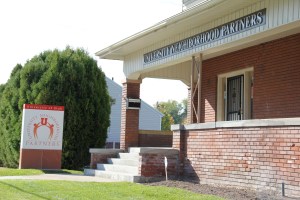Story by IVANA MARTINEZ
Hundreds of schools around the nation — from K-12 to universities — have closed doors in recent weeks due to the COVID-19 global pandemic. In Utah, the “soft closure” for K-12 schools has been extended to May 1.
For many high school seniors, the uncertainty of the pandemic
means the prospect of returning to school remains up in the air. School activities such as sports, alongside the traditional senior year festivities — senior “assassination,” prom and possibly graduation — have been put on hold.
“These are unprecedented times in Utah’s and our nation’s history,” Gov. Gary Herbert said in a March 23 statement.
“I have been overwhelmed with Utahns’ outpouring of support for one another, and nowhere has this been more evident than in the way our educators are supporting Utah students and families,” Herbert said.
The closure was extended in an effort to reduce the spread of COVID-19 in public schools and limit gatherings of 10 people or more. Several in-state universities and colleges have postponed or canceled graduation ceremonies.
Sommer Cattani, a senior at Timpview High School in Provo, said she was experiencing the worst case of “senioritis” prior to the pandemic. She never had anticipated any of this happening and it was a little bit disappointing for her.
“I hated going to school, but now that I can’t, I really want to,” Cattani said in a phone interview.
For most seniors, spring semester is a time of transition to celebrate and prepare for secondary education. Graduation for many is considered a rite of passage to commemorate the last 12 years of education.
“A lot of people are acting like high school is kind of done for me, like I’m probably not going to go back. Which is just weird, so it kind of feels unfinished,” Cattani said.
Cattani said her online classes have easily transitioned since her school had the “soft closure.” However, COVID-19 has affected her decision to attend universities out of state, since most have shut down for the semester. After high school, Cattani was planning to study hospitality and tourism. Now it seems uncertain.
She had planned to tour the Brigham Young University-Hawaii campus over spring break to see if tourism was actually something she’d like to academically pursue. She said it wouldn’t be smart to go to BYU-Hawaii without touring the campus.
“I’m in this weird limbo phase. Hawaii has a really good hospitality and tourism department and I’m not sure if I would want to study that somewhere else,” Cattani said. “So it’s just kind of like oh, I don’t really know what my future holds anymore.”
Sean Edwards, assistant principal of Timpview High School, said the district’s focus at the moment is to effectively transition classes to a distance learning model. The district will then focus on assisting seniors through this transition to post-secondary education.
“I think that is key for continuing the learning experiences if we were to extend the closure or the dismissal,” Edwards said in a phone interview.
“Making sure that, you know, we have a solid and coherent plan with our school counselors, with our college and career access advisor and just making sure we are pushing communication out. We’re doing a lot of proactive reaching out to students and parents,” he said.
Hailey Giles, another Timpview senior, spoke about her experience during this time. She said it has been a “pretty smooth transition” for her because she is used to working on Canvas Instructure. Canvas is an educational technology company based in Salt Lake City.
Giles said in a phone call that she’d dropped one of her advanced placement classes, because it wasn’t pivotal to her graduation and she wasn’t planning on taking the test. But the real impact she’s felt is the loss of senior activities, like hanging out with her friends and specifically spring sports such as golf.
“The fear that we’ll miss out on our senior experience, and especially I play a spring sport,” Giles said. “So this was my year, I finally made varsity and we’re set to win state. And so that was just big, like knowing that I won’t be able to play that sport for the spring season.”
Both Giles and Cattani made it clear that they understand the seriousness of the pandemic and the measures the school administration is taking to protect them. Giles hopes that once school starts she may have a chance to play golf in the summer to make up for the spring session.
As of March 23, assistant principal Edwards said the administration’s focus is on getting the transition right. He mentioned conversations relating to senior activities will happen later when the school has a better idea of how long the extension will be.
The school is continuing to plan for graduation as it’s normally scheduled. For now, many students are working from home waiting to hear what may come in the following months as this pandemic continues.
Filed under: Education, Health & Fitness, SLC's West Side | Tagged: BYU-Hawaii, COVID-19, education, Gov. Herbert, Timpview High School | Leave a comment »










